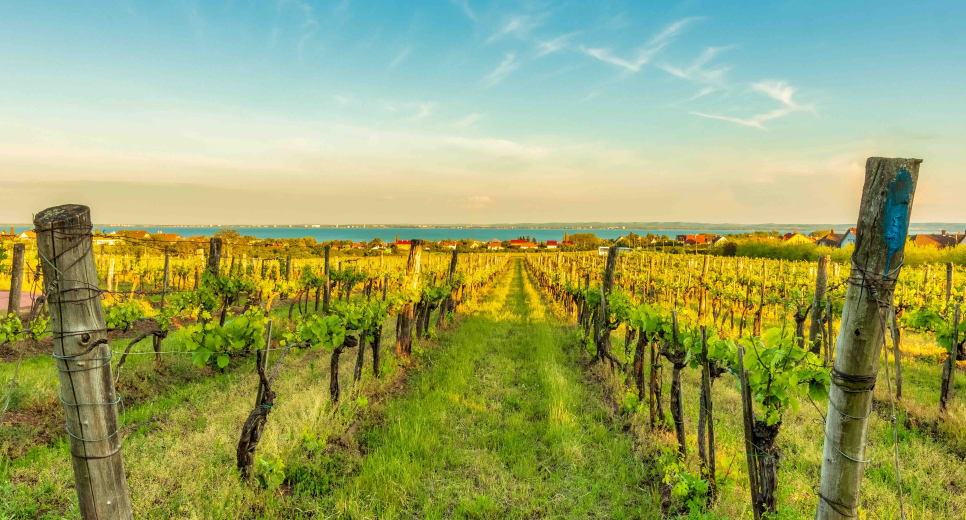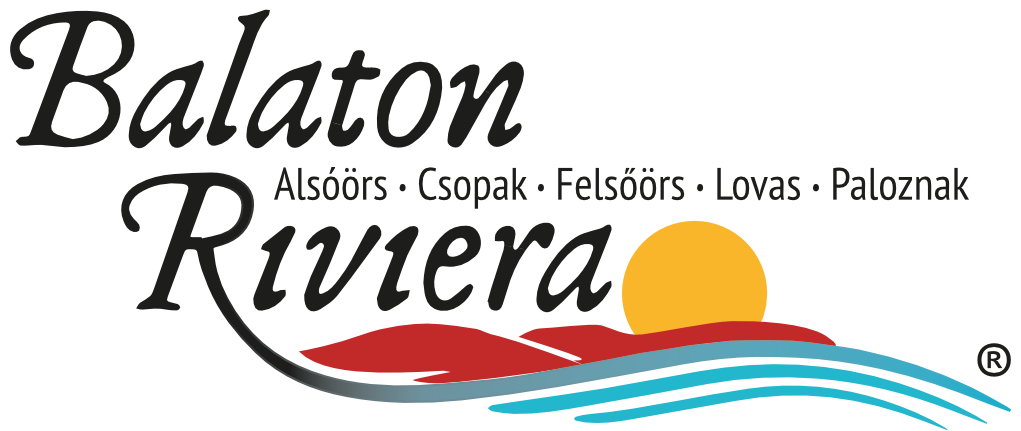
Lovas

LOVAS: A VILLAGE BUILT FROM RED STONES AND DREAMS
Lovas is a village of a few hundred inhabitants that has been growing grapes since ancient times. It is part of the Balatonfüred-Csopak wine region, a landscape of outstanding wine quality. The rhythm of life was determined by the change of seasons and the order of production. It is quiet here, the birds' songs are rarely disturbed by cars.
The landscape radiates a wonderful, archaic peace. In front of us is Lake Balaton, the beach and the railway station of Alsóörs, and behind us, in the Malom valley, the Séd of Felsőörs and Lovas flows. The Roman road passes through the village, which, together with the nearby villa ruins, shows that the Romans were already enjoying themselves here in the Balaton highlands. In Lovas, Paloznak and Csopak were the vineyards of the Baláca-Puszta Roman villa farm. But we can go much further back in time: on the outskirts of Lovas, about half an hour from Király-kút and three quarters of an hour from Nosztori-tetőt, is Europe's oldest paint mine, the like of which can only be found in Africa. Although tourist maps clearly indicate the location of the sensational red clay mine, it is not easy to find because the signage has disappeared, or it may never have existed. In any case, you have to keep looking. If you approach it from the King's Well on the cart track, facing Nostori, after about a quarter of an hour you have to turn left on the forest path and walk into the forest through the bush, downhill, until you reach the crater-like depression, which has been well reclaimed by nature. Dolomitic gravel was being excavated here for a nearby road construction in 1951, when one of the pits yielded bone tools that archaeologists determined were used for mining and carbon isotope analysis showed were about 11,750 years old (other sources date them to much older, 35-40,000 years ago). The red clay layers between the dolomite layers were mined by prehistoric man. The red clay, mixed with fat, was used for face painting, mask painting and cultic purposes. Even hunting weapons were decorated with red, the colour of blood and life. Red powder was sprinkled over the bodies of their dead. The mining tools made of antler and moose bones and the chisels made of the ribs of a goat can be seen in the Hungarian National Museum, while copies of the tools can be seen in the Laczkó Dezső Museum in Veszprém and a small part of the artefacts, consisting of almost 150 pieces, can be seen in the permanent exhibition in the cellar of the Faluház in Lovas.
Its past, recorded in written records from 1290 onwards, lives on not so much in its monuments as in some invisible substance, cultures and eras, like fallen leaves, decomposed in the earth, the village taking root in this humus. It is also considered conservative, I would say it keeps its traditions. The two small churches in the centre of Lovas are definitely worthy of note. The little stone church dedicated to the Holy Virgin was originally built in the 13th century, although it was rebuilt in the 18th century and then in 1911, and still preserves the puritanism of the Middle Ages with its rough wooden beams and its walls of stone.
It's worth visiting the village's cemetery, which was originally built with red gravestones, and if it wouldn't be morbid to use that term, it could be called panoramic, because the hill of the cemetery in Lovas offers a wonderful view of the surrounding area, the eastern basin of Lake Balaton.
In summer 2019, young artists and architects from Pest started an art festival with a continuous auction in the centre. All of this radiates a joyful positive energy, because that's what Lovas is for, to hunker down and create, anything, to wine, sew or garden, write, photograph, paint, sculpt, play music, cook good food.
Another attraction in Lovas is the Gyula Nagy Gallery on Fő Street, run by the painter's daughters, which is also the base for the summer arts festival.
USEFUL INFORMATIONS - CONTACT DETAILS
Mayor's office
Address: 8228 Lovas, Fő utca 8.
Phone: +36 87 447 694
E-mail: onkormanyzat@lovas.hu
Hospital
Address: 8230 Balatonfüred Gyógy tér 1.
Phone: +36 87 584 584
Veszprém County Hospital
Address: 8230 Veszprém, Kórház utca 1.
Phone: +36 88 420 210 or +36 88 420 211
Ambulance: 104
Police: 107
Tow truck: 188
Fire department: 105
Water police
- Balatonfüred: +36 87 342 680
- Siófok: +36 84 310 706
Pharmacy
Address: 8226 Alsóörs, Óvoda utca 2.
Phone: +36 87 447 004
Opening hours:
- M-Fr: 8:00-16:00
- Sat-Sun: zárva
Vet
Dr. Payr Egon
Address: 8230 Balatonfüred, Galamb utca 13.
Phone: +36 87 341 879 vagy +36 30 9942 690
Opening hours: M-Fr: 18:00-19:30
Veterinary pharmacy
Address: 8230 Balatonfüred, Köztársaság u. 10.
Phone: +36 30 9942 690
Opening hours: M, Sat: 9:00-10:00
Post office
Address: 8228 Lovas, Fő utca 8.
Phone: +36 87 447 087
Opening hours:
- M-Fr: 12-13
- Sat-Sun: closed
Lovasi Nagy Gyula Galéria
Address: 8228 Lovas, Fő utca 12.
Phone: +36 70 2742754
E-mail: mydma50@gmail.com
Opening hours: Sat-Sun: 14:00-18:00
